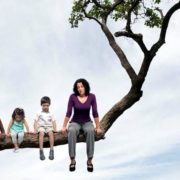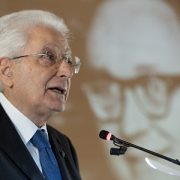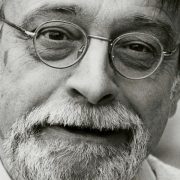The controversy over the choices made by Pope Francis, Jorge Bergoglio, on morals – or on the Amazon, or on China, or an emigration – has not ceased since the beginning of his pontificate, nor will it subside. And that is right, because they are all non-trivial options that involve a whole crowd of pre-existing vested interests.
For this reason, without any knowledge of theology, ecclesiology, or any other doctrine that informs the Catholic clergy, perhaps it is useful to look at the Pope’s term from a historical, geopolitical, and political point of view. This is not in the sense that Bergoglio is or may be rightist or leftist, in the common political jargon, but in the sense that he addresses the themes of the life of the polis, the human society, as a whole.
Four major cross-cutting themes
From this point of view, Francis has apparently addressed four major cross-cutting themes. There is the environment, with concern for the monstrous damage to nature and the few green lungs left; there is the social issue of the poor and immigrants, second-class citizens who besiege the rich north; there is the projection of the Church in Asia, home of 60% of the population, 70% of the economic growth, but with only 3-4% of the Catholic presence; there is the issue of ethics that went from a system based on personal morals to another system based on the idea of following as “disciples” the Gospel.
In all these areas, the Pope has opened breaches and built bridges. He did not say to close the factories and return to a life of laying in hammocks; he did not ask to take off his possessions and donate them to the first bum he saw; he did not ask to move the Holy See to New Delhi or Beijing, nor did he bless orgiastic celebrations within the sacred palaces.
A Church sitting on a perch
In the past, the Church’s stance on all these issues was based on a single pylon, that of the existing, established order. There is damage to the environment, but what can we do? The poor? Give them a handout but without showing us. In Asia, send missionaries, but let the locals learn Latin first; and ethics: we absolve sinners in the confessional and accuse them in public.
This synthesis is simplistic, therefore at times misleading, but perhaps it serves to make us understand briefly that in reality the Church was substantially sitting on a perch, growing isolated. An understandable position in the face of the extraordinary transformation of the world in recent decades. This position was then in line with the progressive retreat of the Church substantially from the peace of Westphalia (1648) onwards.
From the history
The Pope then supported the Habsburgs, who had been defeated in an attempt to reintroduce their Catholic order to Europe. The subsequent effort to circumvent the continental rift using the cultural strength of the Jesuits, rich in wisdom distilled from China, also failed to contaminate the Protestant north.
France, which then replaced Spain as the papal protector, obtained in 1740 the abolition of the Jesuit order, guilty of being too “Spanish” and perhaps even guilty of being too “goodie-good” but detached from the rest of the body of the Church.
From there, the arrival of the Enlightenment and the French Revolution of 1789, and of its stepdaughter, the communist revolution in Russia of 1917, marked subsequent existential and cultural setbacks of the Church. In this, the officially lauded role of Pope Wojtyla in the defeat of the USSR in 1989 may have been interpreted in a partial and imprecise manner.
In popular telling, in 1989 the alliance of the Church and the United States, bastion of Western civilization, took revenge on the communist revolution, and therefore also on its stepmother, the French revolution. Hence the paladins of the new faith dreamed of a sort of “reconquista” against today’s infidels, like the one of the 15th century in Spain against Islam.
Battles of the past
However, this vision clashes with the detail of the story. In 1989, Wojtyla wanted to keep the USSR and work with Gorbachev. The events, however – such as the coup attempt by the neo-communists of 1991 – overtook him, and Russia did not enter a “neo-Catholic” world but made a leap back into an ultra-orthodox cultural universe, which basically rejects the doctrinal centrality of Constantinople before the conquest of the Turks in 1453.
That is, if Catholic conservatives would like to return to the 18th century, Russian Orthodox ones dream of the world of the 14th and 15th centuries, three hundred years earlier, with the battle against Muslims who treacherously insinuated themselves into the Caucasus. As in World War I, Moscow fought against the Germans but also against the Turks in the south.
From the castle to the countryside
But all these connections with the past, while of course very important, actually isolate the Church from the present when it faces different challenges.
In this Bergoglio has decided to change his strategy and way of seeing things. Instead of floating in the fortified castle and organizing for a big counter-offensive that will take over enemy land piece by piece, he has chosen to build bridges, make sorties, lower drawbridges, and start transforming the Church from a castle on the top of the mountain to a modern city with its city and countryside.
This means drawing a line on the peace of Westphalia, or even the conquest of Constantinople, but starting from even further back. It begins from the idea of Christians reaching all over the present world, made up of atheists, Protestants, Buddhists, and Hindus – just as the world where Christian Jews moved yesterday was that of the Roman and Persian empires, made up of pagans and Zoroastrians.
The bridge is an answer
The strategy is certainly risky from a political point of view because by lowering drawbridges, instead of having castellans go outside, rebels of the countryside may come inside. But hunkering down in a fortress did not work for at least 200 years, and the success against the USSR has in some ways proved to be worse than a defeat. Furthermore, standing still, undecided, is in itself a surrender. Perhaps, we should therefore think in very different terms.
The bridge here is an answer. In this, the Pope has not stopped being such. He wears white like his predecessors 2,000 years ago, he does not go around in tracksuits and sneakers, and he always lives in the Vatican. That is, he has one leg, a strong pylon in the tradition. From here, he threw an arrow with a rope attached and worked to have someone on the other side pull the rope that holds the rest of the suspension bridge.
It is a choice of solitude, because while resting on two sides the body of the bridge is suspended in the void, but here there is also a choice of salvation for that part of the Western world that continues to recognize itself in the conservative Church.
The West no longer has the demographic advantage of past centuries, the economic advantage is thinning, and the technological one may disappear. That is, the West must understand its new role in the world, and in this the Catholic Church may perhaps be as useful to it as it was to the Roman Empire, in its mutations to the west and east of the Mediterranean after the imperial great Civil wars tore apart the Roman world into various pieces.
On the other hand, it may also be useful to other parts of the world that must integrate with the West to avoid bloody and destructive clashes.






Interessante analisi che suscita numerosi interrogativi. Un’opinione rispettabile anche se forse necessita di approfondimenti. Un’ipotesi da studiare attentamente.
Grazie!